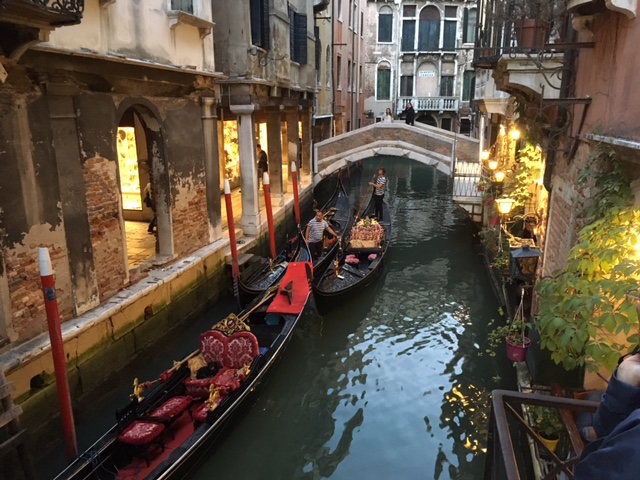Offenbach, Barcarole from The Tales of Hoffmann
 Operas are full of hit tunes—at least, that’s the hope of the creators, directors, and financial backers. If you consider how people today enjoy the songs from Phantom of the Opera, Les Misérables, and musicals like Guys and Dolls, you have the right paradigm.
Operas are full of hit tunes—at least, that’s the hope of the creators, directors, and financial backers. If you consider how people today enjoy the songs from Phantom of the Opera, Les Misérables, and musicals like Guys and Dolls, you have the right paradigm.
Popular enthusiasm guaranteed the success of operas in the past, particularly beginning in the early 19th century when aristocratic patronage waned and ticket sales determined a theatrical work’s fate. A show opened and ran profitably, or it closed. The number of people humming the tunes in the streets and telling their friends to go made the difference.
French composer Jacques Offenbach knew how to write hit tunes and beguile his audiences. Although he died four months before the Tales of Hoffmann opened in 1881, his musical setting of three stories adapted from the provocative German writer E.T. A. Hoffmann still delights us today. Framed by a prologue and epilogue starring a poet (personification of Hoffmann) and his Muse, the three stories were cleverly adapted by librettist Jules Barbier to give audiences the right doses of glamour, lyricism, frustrated love, and otherworldly magic.
One of the best tunes remains Belle nuit, ô nuit d’amore that opened Act III, a Venetian fantasy. A duet for two sopranos, the soaring vocal lines are laid across an orchestral layer that spins the undulating rhythm of a barcarole (long, short, long, short). You can enjoy it here in an outdoor festival in Cortona, Tuscany, conducted by one of today’s biggest classical-pop stars, André Rieu.
Belle nuit, ô nuit d’amore particularly strikes me right now, as I’ve just visited Venice for the first time. Of course, I “knew” the city as an historian and could talk in a scholarly manner about its architecture and cultural history. But reading is one thing. Climbing through a city is another.
Yes, climbing. Climbing the steps of endless little bridges that span the complex web of Venetian canals. Weaving through teensy, confusing alleys, stumbling onto squares that give only a slight indication as to where one is, and then, again, ascending the steps of another ancient ponte (bridge) to cross yet another canal.
Of course there was the splendor of St. Mark’s square and the Doge’s Palace, long the inspiration of poets and painters. Still, for me, the physical logistics of those canals and step-covered bridges hit home. I began to appreciate better the undulating rhythm of the “barcarole.” Its hypnotic pattern really does evoke the daily, not easy, life of travel, through these canals.
So let Hoffmann’s timeless duet place you, in imagination, on one of those gondolas, slipping through narrow canals, disappearing beneath weathered bridges, moved by lazy oars and the lapping of waves.



